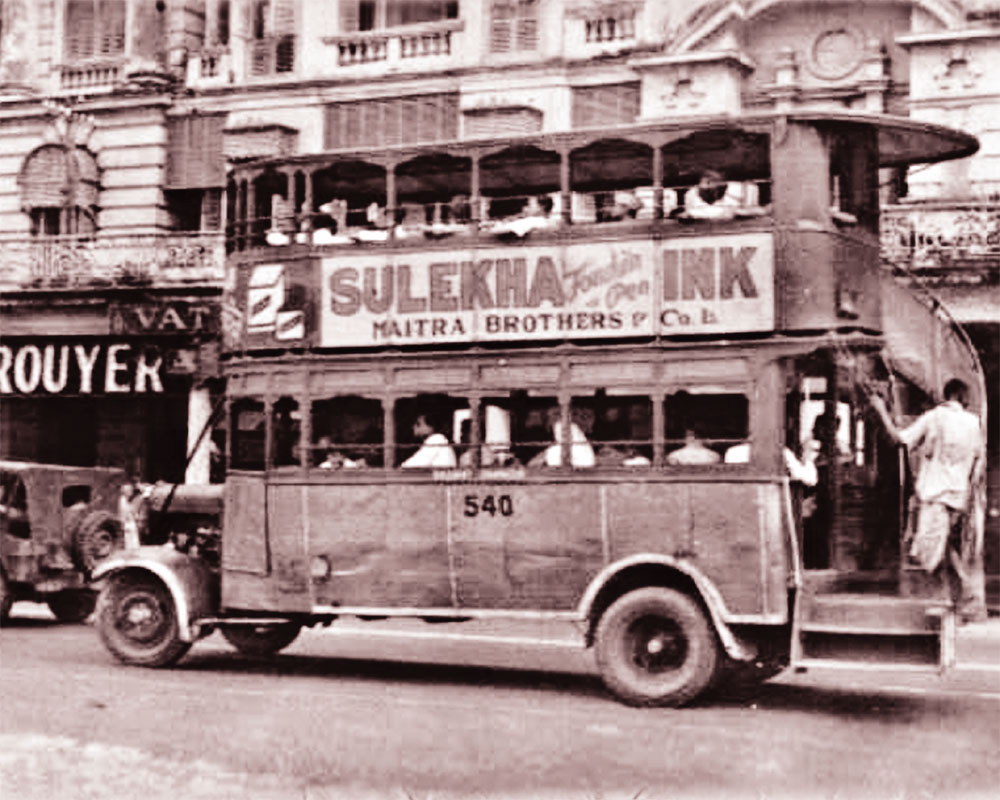The legacy of the ‘Swadeshi Fountain Pen’ and ‘Sulekha Ink’ lives on. We owe so much to the courage and resilience of our freedom fighters
Recently on June 14 a tweet by Damayanti Datta on Satish Chandra Dasgupta the scientist and inventor of the ‘Swadeshi Fountain Pen Ink’ – which was later named “Sulekha” by Gurudev Rabindranath Tagore – caught my attention. In the tweet, Damayanti pointed to June 14, 1932, when Mahatma Gandhi had requested Dasgupta to create a ‘Swadeshi Fountain Pen’ ink. This ink went on to become part of our childhood and school days too. Chelpark was a much later – but popular – edition to this brigade.
The concept of a portable writing instrument with an ink reservoir can be traced back to ancient times. However, it was not until the 19th century that the fountain pen, as we know it today, started to take shape. Initially, fountain pens were imported from Europe and used primarily by the British ruling class in India. However, as the nationalist movement gained momentum, Indians began to question their dependence on foreign goods and sought to develop indigenous alternatives.
Mahatma Gandhi recognized – and gave a clarion call to the Indians – the importance of self-reliance in challenging British domination. He advocated for the use of indigenous products and actively discouraged the use of imported goods. In this case, the use of fountain pens – being an integral part of education and communication – was seen as a symbol of this dependence on foreign powers. Gandhi's persuasive words inspired many individuals, including Satish Chandra Dasgupta, to take up the cause of manufacturing indigenous fountain pens.
In response to Gandhi's call for self-reliance, Dasgupta established a manufacturing unit in Calcutta in the 1920s, aiming to produce pens that would rival their foreign counterparts. He assembled a team of skilled artisans and engineers and began experimenting with various designs and materials. After several trials and iterations, Satish Chandra Dasgupta successfully created the ‘Swadeshi Fountain Pen’, a testament to Indian craftsmanship and ingenuity. The pen was meticulously designed to cater to the needs of the Indian market, with a focus on durability, ease of use, and affordability. The ‘Swadeshi Fountain Pen’ was not only a functional writing instrument but also a symbol of national pride and resistance. Its design incorporated elements of Indian art and culture, with intricate engravings of national symbols and inspirational quotes from prominent Indian leaders. In tandem with the development of the ‘Swadeshi Fountain Pen’, Dasgupta also recognized the need for a high-quality ink that would complement the pen's performance. He introduced ‘Sulekha Ink’, a locally produced ink that matched the standards of imported varieties. This ink was crafted from natural ingredients and boasted vibrant colours and smooth flow, making it ideal for use with the ‘Swadeshi Fountain Pen’. He also employed skilled chemists to refine the ink formula, utilizing indigenous materials to create a product that surpassed the quality of foreign imports.
It wouldn’t be an exaggeration to say that the ‘Swadeshi Fountain Pen’ and ‘Sulekha Ink’ became iconic symbols of India's struggle for independence. They represented the nation's determination to break free from the shackles of colonialism and foster self-reliance in all aspects of life. The pens and ink gained popularity in due course and people embraced it in their lifestyle.
The success of the ‘Swadeshi Fountain Pen’ and ‘Sulekha Ink’ also had a lasting impact on the Indian manufacturing industry. Their production inspired other entrepreneurs to explore indigenous alternatives in various sectors, fostering a sense of pride and promoting economic growth. The fountain pen industry in India witnessed a significant boost, with numerous manufacturers emerging and contributing to the country's self-sufficiency in the years to come.
In an era dominated by digital communication, where ballpoint pens and keyboards have become the norm, the fountain pen stands as a timeless relic that exudes elegance, sophistication and a touch of nostalgia. Despite technological advancements, the allure of the fountain pen has not waned; instead, it has evolved into a prestigious symbol that embodies craftsmanship, individuality, and the art of writing. One can also say that the tactile connection between the writer, pen, and paper adds a layer of intimacy to the act of writing and enhances the pleasure of putting thoughts onto paper.
The fountain pen's association with achievement and status has contributed to its prestigious image. Throughout history, prominent figures, including renowned writers, intellectuals, and business leaders, have used fountain pens as a mark of distinction. Whether it was Mahatma Gandhi, Jawaharlal Nehru, Netaji Subhash Chandra Bose, Sarojini Naidu, or Rabindranath Tagore, the fountain pen served as a medium through which these freedom fighters conveyed their thoughts, aspirations, and visions for an independent India. The act of writing with a fountain pen became a statement of defiance against the oppressors. The legacy of the ‘Swadeshi Fountain Pen’ and ‘Sulekha Ink’ lives on in the memories of many unsung heroes, like Satish Chandra Dasgupta deserves to be remembered for his indomitable spirit and his power of innovation. They serve as a testament to the courage and resilience of those who fought for India's freedom and continue to inspire generations and nurture local industries,.
(The writer is Programme Executive, Gandhi Smriti and Darshan Samiti)
























